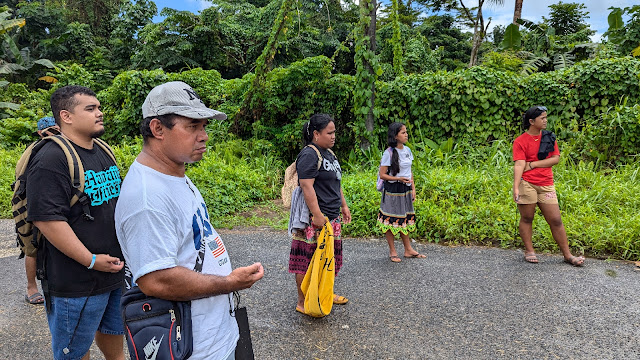RipStik waves and the speed of sound
This term I had the perhaps ill conceived concept of prelaying the centerline on a four sheet spread. Summer provides more time to set this up.
Here one can more clearly see the errant entry and directional vector. That the paper was not aligned with the sidewalk and was off center did not help. Despite best efforts, the paper was pointed slightly south of west.
Indeed the pink line would be horrifically ill conceived. I would completely miss the line.
Due to drips, I opted to move the RipStik runway to the east. This drastically shortened my inbound leg. I hit the paper off center, headed further of center, and completely unstable. I was so unstable and off that I did not start my timer.
I distributed three timers and held the fourth, but only one student obtained a time. And I had nothing.
The track was not only off the intended centerline, the attempt to correct back to the centerline would cause an inconsistent wavelength and amplitude. Adding insult to injury was that the waves did not start or end at a node on either end of the 333 cm four sheet runway.
Adding to the problems, there was an segment of the curve that would be deemed to be 0.2 wavelengths at the end of the run. The only good news was that this led to there being 5.7 waves on the runway, a multiple of 1.9 seconds. Morning wrapped early as this exercise is only 50 minutes long. Given the amount of new concepts and terminology, this felt appropriate.
Loss of Internet connectivity in the afternoon meant I could not demonstrate a sound wave using an online oscilloscope. So the laboratory session went directly into setting up for measuring the speed of sound. Passing rain showers punctuated by sun and high humidity made this a more grueling laboratory.
After the data gathering, the class returned to the classroom. As one student said in jest out at 549 meters, "I will call a taxi [to get back to the classroom].
Timers Sru, Etwet, Maria, LaPrincia, and Loyeesha out at around 488 meters. Maria was the flagger. The loss of campus Internet had me entering data on my cell phone using a cellular package. The newest version of the data entry sheet allowed the random selection of places to time from - the sheet handles the conversion from the imperial measuring wheel to metric distances.
Rollin on the far left was also timing. Sidney and Bernie were clappers this term.
Maria flagging a new clap.
Heading back as rain swept onto campus.
















Comments
Post a Comment